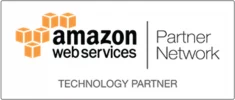Neobanks are digital-only financial organisations that offer a convenient banking environment. It has become widely recognised among Gen Z and millennials owing to its technically advanced financial services. These banks draw customers looking for efficient options without physical branches by offering high-interest savings accounts, low fees, and personalised tools for managing their money.
Traditional banks have been forced by this change to improve and innovate their digital services, creating a competitive atmosphere where customer service is given first priority. Neobanks are pushing for regulatory changes to make banking more inclusive and fulfil the requirements of modern consumers, while also democratising financial services for startups and underbanked individuals.
Neo Banks: A New Era of Banking
Neobanks are a digital-first banking model that operates without physical branches, offering cheaper and more efficient services. They focus on customer-centricity, providing quick account creation procedures, user-friendly interfaces, and innovative features like smart reporting and easier international payments. Neobanks are agile, responding quickly to market developments and client feedback, supporting ongoing innovation and acquiring tech-savvy customers.
Successful neobanks worldwide include Revolut, N26, Chime, Monzo, Starling Bank, Varo Bank, TransferWise, and Curve. These banks offer currency exchange, cryptocurrency trading, budgeting services, mobile-friendly interfaces, smart expenditure insights, and many more advanced features.
Neobanking Trends to Watch
- Increased Adoption of Open Banking: Encourages collaboration among financial institutions and third-party providers for enhanced customer offerings through APIs, enabling neobanks to create marketplaces where consumers can easily compare and access tailored financial products, thus enriching the user experience.
- Expansion of services: Neobanks are moving beyond traditional banking products to include business accounts, credit cards, and investment options, indicating a shift as neobanks are increasingly seen as primary banks rather than secondary options.
- Embedded Finance: Integrates financial services into non-financial platforms, enhancing access and convenience for consumers, increasing financial inclusion by providing necessary services to underserved populations, such as small businesses and individuals previously outside traditional banking systems
- Artificial Intelligence: Leverages machine learning algorithms to personalise customer experiences, improve risk assessment, and enhance decision-making processes.
- Catering to Specific Niches: Neobanks provides customised financial products and services to distinct customer segments, addressing unique consumer pain points.
Open Banking: Fueling the Neo Bank Revolution
- Exposure to Financial Data: Open banking permits neobanks to provide third-party developers with reliable access to customer financial data. Neobanks take advantage of open finance by using Open Banking APIs to access a wide range of financial data from various institutions. This leads to seamless account aggregation, resulting in offering tailored financial insights, budgeting tools, and bespoke investment recommendations for their customers.
- Personalised Financial Management: Neobanks leverages open banking to integrate budgeting tools that let customers track their expenditures, create savings goals, and manage their finances more successfully. Users can readily visualise their financial health, find areas for development, and obtain a better knowledge of their spending habits via a simplified dashboard. This level of personalised financial management enables people to reach their financial goals more easily and confidently.
- Investment Solutions: Neobanks facilitates users to invest from their accounts by linking with investment platforms. This enables customers to manage their investments and savings in one location, while also streamlining the investment process. Automated investment and themed portfolios could be appealing to the younger, tech-savvy customers that neobanks normally target.
- Regulatory Compliance: Open banking adheres to regulatory frameworks such as the revised Payment Services Directive 2 and the General Data Protection Regulation. This compliance assures that neobanks and their third-party partners can safely manage sensitive financial data, building trust among users while using integrated services.
- Expanded Ecosystem Partnerships: By leveraging open finance, Neobanks can expand their financial services by partnering with fintech companies in areas like payments, insurance, and wealth management. They can also access traditional banks’ customer base and regulatory infrastructure. Additionally, neobanks can integrate with retail and e-commerce platforms to provide seamless payment solutions and personalised shopping experiences.
- Faster Processes: Neobanks can use open banking APIs to streamline procedures such as opening new accounts, making payments, and carrying out money transfers, saving time for both customers and the financial institution.
- Improved User Experience: The seamless integration of multiple third-party apps via open banking optimises the user experience by creating a more unified platform. For instance, connecting neobank accounts to budgeting or investment apps easily lowers friction and boosts financial engagement.
- Market Reach: Open banking allows neo banks to combine numerous financial services, expanding their customer base. Users seeking convenience and improved financial management tools are more likely to prefer neo banks, resulting in their increased market presence.
- Enhanced Financial Literacy: Neobanks can employ data insights obtained from open banking to deliver personalised financial education and advice, allowing clients to make smarter choices.
- Enabling Innovative Financial Products: Open Banking helps neobanks to address market gaps that traditional banks are frequently sluggish to fill. It promotes the development of novel financial products tailored to the needs of today’s consumers. Neobanks can capitalise on the open banking structure to create services that are more responsive to consumer needs, such as personalised loan packages, real-time transactions, simpler payment solutions, and enhanced savings facilities. The depth of innovation enabled by Open Banking not only improves consumer pleasure but also redefines banking experiences.
- Increased Competition and Disruption: Neobanks, which often have smaller business structures and higher flexibility, can use Open Banking insights to challenge the old banking paradigm, resulting in increased competition. This forces existing banks to enhance their offerings to retain customers. As neobanks provide lower costs, more personalised products, and better user experiences, traditional banks are under demand to improve their services and customer service quality. This cycle of competition ultimately benefits consumers by providing them with a larger range of options and more effective financial solutions
Protecting Finances: The Primacy of Open Banking in Neo Bank Security
Security Issues in Neobanks
Neobanks are subject to a variety of security vulnerabilities due to their reliance on digital interfaces and financial data interconnectivity. The main security issues are:
Data Breach: Neo banks keep a multitude of sensitive personal and financial information electronically, making them ideal targets for cybercriminals. Data breaches involving account numbers, passwords, and transaction history can result in identity theft, financial loss, and reputational damage to both the neobank and its clients.
Transaction Fraud: They are vulnerable to fraudulent activity such as account takeovers and unauthorised payments. Cybercriminals can use vulnerabilities in the system to get access to consumer accounts and drain payments.
Phishing Attacks: Neobanks and their clients are at serious risk from fraudulent transactions, in which malicious actors pose as trustworthy organisations in an attempt to fool users into disclosing private information, such as login credentials. Successful phishing attempts can jeopardise account security and result in financial loss.
Third-Party Risk: Neobanks frequently partner with TPPs to provide additional services. However, security flaws within these TPPs could subject neobanks and their customers to possible threats, emphasising the significance of thorough due diligence and ongoing monitoring of third-party providers.
Open Banking Regulations and Frameworks for Data Security
Open banking policies and procedures shield data exchange against these security dangers. Key components are:
Strong Customer Authentication: Regulations need rigorous authentication mechanisms to ensure that only authorised third-party providers have access to financial data. Neo banks can benefit from PSD3 by adhering to its stringent security standards that reinforce strong customer authentication requirements, expanding the scope of open banking, promoting account-to-account payments, and increasing security and fraud prevention. Two-factor authentication is frequently mandated by SCA, which provides an additional layer of security by requiring the user to have password that they are aware of and possess a mobile device to receive OTP.
Data Anonymisation: These techniques enable service providers to use user data for analysis and service improvement while protecting individual identities. This reduces the risks connected with data breaches and unauthorised data access.
Secure APIs and Data Encryption: APIs are the foundation of open banking, allowing banks and TPPs to share data seamlessly. Regulations require the use of secure APIs using encryption mechanisms, safeguarding data sent between parties from interception and unauthorised access. Specifically, stringent security standards, including OAuth 2.0 for resource access authorisation and OpenID Connect for user authentication ensure a robust and secure user experience.
Regulatory Oversight: The UK Financial Conduct Authority enforces compliance with security requirements and best practices. This ensures that both neobanks and TPPs strictly adhere to data security norms, fostering a culture of transparency and continual development in security protocols.
Shared Responsibility for Neobanks, TPPs, and Users
In the open banking ecosystem, preserving security is a shared duty among all parties.
Neobanks: As guardians of client data, neobanks must establish strong security measures, conduct frequent security audits, and verify that internal systems and third-party links are safe.
Third-Party Providers: Must meet the same stringent security requirements as neobanks. They must invest in safe technology, undertake rigorous risk assessments, and keep open communication with neobanks on security standards.
Users: By being cautious of their personal data, consumers can contribute to ensuring security. Users should use strong passwords, enable 2FA, and be wary of fraudulent data requests.
The Power Duo: Open Banking and Neo Banks
Open Banking is transforming the financial sector by fastering collaboration between traditional banks, fintechs, and neobanks. With safe access to financial data via APIs, neobanks can provide innovative and personalised, digital-first services that meet consumers’ shifting needs.
The regulatory environment, particularly PSD2, emphasises the need of data sharing and customer authentication, allowing neobanks to develop while increasing customer loyalty.
As we look ahead, the future of Open Banking looks promising, with technological improvements and regulations such as PSD3 paving the path for increased financial inclusion and better service delivery.
To succeed in this dynamic market, financial institutions can deploy Macro Global’s Tavas Open Banking Product Suite, which provides a safe and compliant platform for seamless API integrations. Embracing Tavas is critical for banks and neobanks looking to realise the full potential of Open Banking and flourish in a digitally connected future.
Explore Open Banking Role in Neo Banks Transformation
Tavas
Open Banking Product Suite and Solutions
Explore Open Banking Role in Neo Banks Transformation
Tavas
Open Banking Product Suite and Solutions
Related Posts
Best Practices & Strategies Guide for Asset Management & Investment Firms Generate FSCS SCV Reports
Learn how asset management firms can effectively manage their FSCS compliance obligations through robust SCV reporting strategies.
Navigating the Future of Digital Wallets Amid Big Tech Challenges
Discover how Digital Wallets are transforming payments, the challenges they face, and what the future holds for secure digital transactions.
Defining Your Regulatory Roadmap: Technology, Data Compliance, and Security
Create a sustainable compliance strategy that positions your FI's for long-term success. Learn how to anticipate regulatory changes, leverage technology, and build a resilient compliance framework.

















